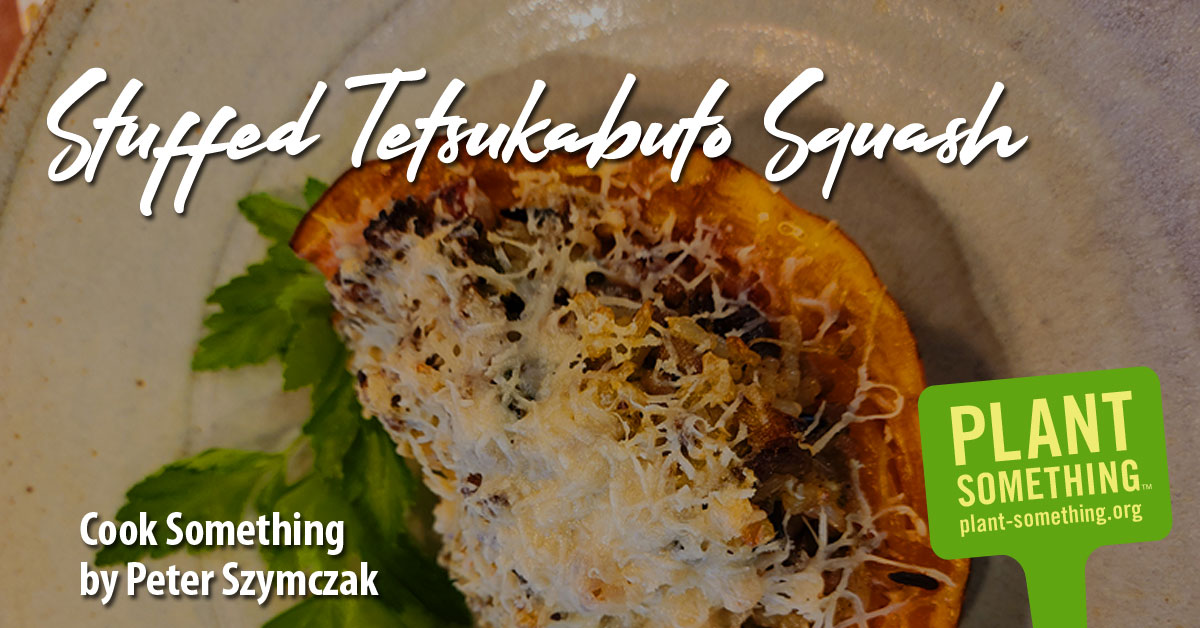OK, just maybe it’s a bit of an overstatement to say there are a billion-billion reasons to love winter squash. But with so many versatile, vividly colored and flavorful winter squash varieties available at farmer’s markets, it sure can seem like there are infinite combinations of seasonings and preparations that transform them into warming soups, casseroles, lasagna, ravioli, gnocchi and even desserts.
So many choices can be thrilling, but they can also be overwhelming, especially when trying to choose a winter squash you may not be familiar with.
For simplicity’s sake, let’s break the mindboggling number of winter squash varieties down to the three main groups, classified by species: Cucurbita pepo, Cucurbita moschata and Cucurbita maxima.
Cucurbita pepo includes acorn squash, spaghetti squash and delicata squash, which as its name implies is the most delicate of winter squash, with generally softer skins, milder flavors and shorter shelf lives. C. pepo varieties appear in the fall, they usually don’t last very far into winter, and they’re ready to use as soon as they’re harvested.
The other two species of winter squash – Cucurbita moschata and Cucurbita maxima – are usually put through a “curing” process before they are sold. After they’re harvested, the squash are left to dry out for about two weeks. As the water content of the squash evaporates, natural sugars are concentrated and the squash becomes sweeter tasting. Curing also causes the skin of the squash to harden. A hard skin helps the squash resist rot, allowing for long storage.
Some of the most popular Cucurbita moschata are butternut, honeynut, Long Island cheese and black futsu. These winter squashes aren’t as long-lasting as C. maxima, which can keep for a year or more, if stored well, but they have one advantage – their skin. While strong, the skin (also called “rind”) of most C. moschata doesn’t need to be peeled before preparing or eating, as is the case for most C. maxima varieties.
Cucurbita maxima is the longest-lasting winter squash species. Varieties include Hubbard, red kuri, kabocha and banana squash. These have hard skins and dense flesh that tends to have the most intensity of flavor.
The C. maxima variety I used for this recipe is called “tetsukabuto,” also known as Japanese pumpkin. The translation of the Japanese name is “iron helmet,” after the hardness of the flesh and rind. Botanically a hybrid between kabocha (C. moschata) and butternut squash (C. maxima) varieties, tetsukabuto was bred in Japan during the 1960s to address insect and disease problems, produce high yields, and store all winter long and well into the New Year.
Now that we’ve reduced quintillions of winter squashes to just one, let’s get cooking!
Stuffed tetsukabuto squash
Serves 2–4 as a main dish.
Ingredients
- Wild rice, uncooked, 1 cup (about 2 cups cooked)
- Tetsukabuto winter squash (or any other similar variety), 1 weighing 4-6 pounds
- Ground lamb (or other ground meat – optional), 1 pound
- Olive oil, 2 tablespoons
- Salt and pepper
- Yellow onion (about 1 small), diced, 1 cup
- Garlic (2-3 cloves), minced, 1 tablespoon
- Dried cranberries, ½ cup
- Thyme (or other herb – rosemary, winter savory, etc.), leaves picked and roughly chopped (about 2-3 tablespoons)
- Parmesan cheese, grated, 1 cup (optional)
Instructions
- Cook wild rice according to package directions.
- Prepare squash: Preheat oven to 375 F. Wash the squash thoroughly in warm, soapy water. Cut squash in half – top to bottom or through the middle, either direction is fine. Scoop out the seeds and save them for roasting, leaving a hollow cavity in the middle of each half. Rub the cavity with olive oil and sprinkle with salt and pepper. Place squash, cut side down, and the seeds on a lined baking sheet and roast for 30 minutes. Take out of the oven and let cool, keeping the oven on.
- Optional: While the squash is roasting, cook the ground meat (if using) in a nonstick skillet over medium heat until done and browned. When done, scoop into a bowl and set aside.
- Cook the stuffing: In a nonstick skillet over medium-high heat, add 2 tablespoons olive oil and when hot, add the diced onion and cook, stirring, until onion is softened (about 3-5 minutes). Add the garlic and a sprinkle of salt and pepper. Cook, stirring for about a minute until the garlic is fragrant. Add the cranberries, thyme (or other herb), cooked rice and cooked ground meat (if using) and stir well. Taste, and add more salt and pepper to your taste.
- Assemble and bake the stuffed squash: Put the squash halves, cavity side up, back onto the lined baking sheet. Spoon the stuffing mixture into the cavity of the squash halves, filling all the way full and mounding over — it’s OK if some of the filling spills onto the baking sheet. Bake for 15 minutes, until the stuffing and squash are piping hot.
- When the stuffed squash is done, sprinkle it with cheese (if using) and return to the oven for another 5-7 minutes, until the cheese is melted.
- Remove stuffed squash from oven and enjoy immediately! The squash can be served by itself or with a side salad, and many beverages will pair well with it — beer, wine, cider, tea or even kombucha.

